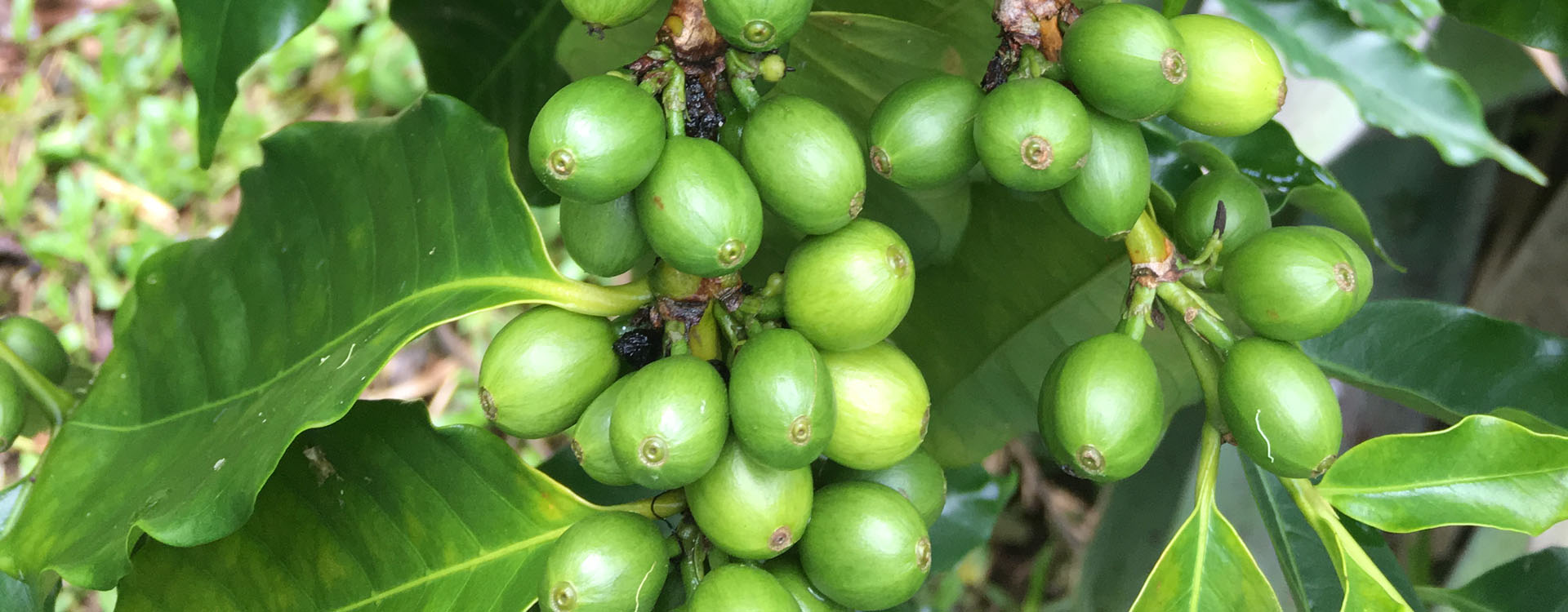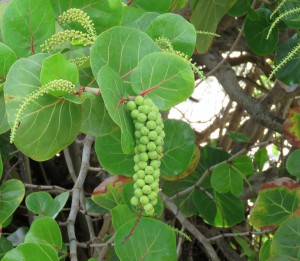Sea Grapes
excerpt taken from Marie C. Neal’s IN GARDENS OF HAWAII– 1965
really yummy when red and ripe!
Coccoloba uvifera: (the entire section below)
At home in thickets along sandy shores in warm parts of America is the sea grape,which in Hawaii is planted as a windbreak near beaches. It is a twisting tree, to 20 feet or more high; the trunk rarely attains a diameter of 3 feet. The branches zig zag and form a dense canopy; the bark is thin, smooth and brown. The tree is ornamental and bears attractive, broad,rounded, glossy, thick red veined leaves, the largest to a diameter of 8 inches. Early Christians in Mexico are said to have used the leaves for writing paper. When the leaves are fresh, scratches made with a sharp point show white on the green surface. Flowers of the sea grape are fragrant and grow in spikes about 6 inches long. Each has 5 sepals, 8 stamens and 3 styles. The pear shaped,reddish, sweetish-acid, astringent fruits hang in clusters, each fruit containing a large globose nut. In the West Indies an alcoholic drink is prepared from the fruits and jelly can be made of them. The roots also astringent, are used to cure dysentery. The wood is hard, polishes well and is valued, especially in Jamaica, for cabinet work. It also supplies fuel and, when boiled, yields a red dye. A gum from the bark is used for tanning and, medicinally for throat ailments. The tree grows from cuttings or seeds.
Final Sea grape note: In the edition of the COSTCO magazine (July 2015) -it lists the foreign COSTCOs and under Japan’s entry- the “Unique item not found in US: sea grapes”– 🙂


